new posts in all blogs
Viewing: Blog Posts Tagged with: story, Most Recent at Top [Help]
Results 26 - 50 of 323
How to use this Page
You are viewing the most recent posts tagged with the words: story in the JacketFlap blog reader. What is a tag? Think of a tag as a keyword or category label. Tags can both help you find posts on JacketFlap.com as well as provide an easy way for you to "remember" and classify posts for later recall. Try adding a tag yourself by clicking "Add a tag" below a post's header. Scroll down through the list of Recent Posts in the left column and click on a post title that sounds interesting. You can view all posts from a specific blog by clicking the Blog name in the right column, or you can click a 'More Posts from this Blog' link in any individual post.
Over a year ago, I worked and finished a whimsical macabre children’s story called The Stumps of Flattop Hill. While my ultimate hope of publishing this into a book format hasn’t materialized yet, I decided to simply put it online for the world to enjoy.
So check it out and I hope you like it. Maybe one day we’ll still see The Stumps printed on a nice shiny hard bound.
http://www.tapastic.com/series/The-Stumps-of-Flattop-Hill
Cheers!
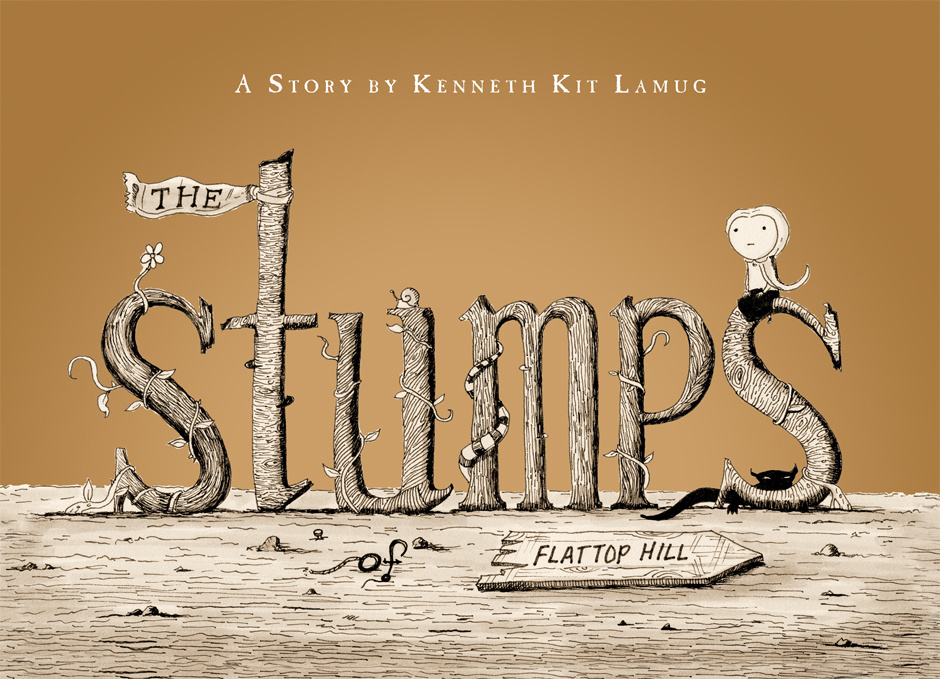
By: Mark Myers,
on 6/1/2014
Blog:
(
Login to Add to MyJacketFlap)
JacketFlap tags:
It Made Me Laugh,
story,
family,
fiction,
art,
dogs,
humor,
Men,
funny,
Dad,
Add a tag
While picking up the piles on Saturday, I found Winston sitting in his usual hole surveying the property. As dogs go, he looked unusually forlorn. I put down my tools, walked over the old boy, and asked, “Why so glum?”
Expecting nothing, I was slightly surprised when he answered (in a wonderful British Accent), “I find myself in a state of loss.”
“Why’s that?” I pursued.
He turned his head to scan the horizon. “Have you ever gotten anything just right? I mean so perfect that you know there has never been, nor will ever be anything that quite equals your creation?”
“I don’t know,” I answered, contemplating my artistic endeavors. “I suppose that rocking horse I made was pretty good.”
“The one your child sits on?”
“Yeah, she rides it.”
“How do you feel when she rides it?” he inquired.
“I guess I feel good to see her use it.”
“So it delights you to have your progeny place her dirty bum upon your work of art?” he said haughtily.
“She wears cloths!” I countered.
“Not always,” he said knowingly, still looking away.
By this time, I began to grow angry and impatient. “What’s your point?” I stammered.
“I am simply trying to give you a point of reference for my mood. You asked. I spend a week arranging my work into the perfect array and you come out with your slotted spoon and shopping bag and destroy the lot,” he explained. “Just like you make a rocking horse and your daughter smears her jelly-stained fingers and dirty backside all over it.”
“That’s why you were licking it,” I realized.
“Just the handles,” he snapped.
“But this? This is just poo,” I observed, pointing to the bag.
“Just poo? Just poo?” He said indignantly. “I’ll have you know that it is a dog’s highest creation, perfectly placed to entice females and intimidate rivals! It is my art! My natural medium. Secondarily, they are little traps to keep your children and her filthy companions from wandering into my territory.”
“Your territory? This is my yard.”
“I disagree,” he said coldly.
“But I have a title to it,” I said, wondering if I would have to explain property laws to him, but guessing he knew more than me about them based on his superior tone.
“Your title is worthless in the natural world. I have pooped on it, therefore it is mine.”
We were at an impasse. I thought about solving this his way, but didn’t have to go at the moment and was slightly afraid of the neighbor’s reaction.
“Okay. Well…I’m gonna finish picking this stuff up,” I said as I returned to my chore.
“And I’m going to put more down,” he replied nonchalantly. “I’ve been saving one for when you finished your rounds.”
I paused and looked back over my shoulder. His smarmy grin ticked me off, but I didn’t have time to argue anymore. It was almost time for kick-off.
Photo Credit: David Wilmot from Wimbledon, United Kingdom (Flickr)
Filed under:
It Made Me Laugh 


By: Mike Cressy,
on 5/16/2014
Blog:
Sugar Frosted Goodness
(
Login to Add to MyJacketFlap)
JacketFlap tags:
MikeCressy,
dale arden,
flash gordone,
illustration,
story,
comic book,
Photoshop,
Space,
paint,
aliens,
Sci Fi,
ming the merciless,
pop,
planet,
Add a tag
These are from drawings I did a year ago. Ming the Merciless, Flash Gordon and Dale Arden.

" Saucy is a real character dealing with real stuff—hard stuff that doesn’t have easy answers, not in real life and not in fairy tales, either. This is a really compelling and ultimately hopeful story. Highly recommended."
– Debby Dahl Edwardson, National Book Award finalist and author of
My Name is Not Easy
Read a sample chapter.
We don’t write in a vacuum. Your story is in the context of the whole of literature, and specifically, the literature of your genre. How does your story add to, change, enhance the conversation?
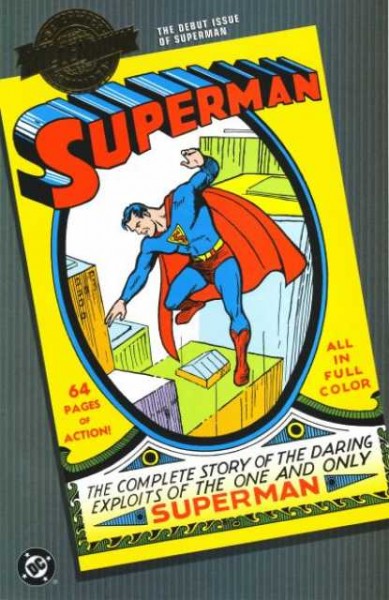
Superman No. 1, Millennium Edition, a reprint of the first ever Superman Comic.
This question was brought home to me as I picked up my son’s comic book. It’s a reproduction of the original Superman comic book from 1938 (Millennium Edition, Superman 1, December 2000, originally published as Superman No. 1 Summer 1939). Wow! It’s bad. Really.The characterization, the back story, indeed the characters are all pretty stale and cliched. But that’s my evaluation from this time, from 2014.
The reproduction starts with an introduction to the comic:
Until 1938 most comics were usually filled with reprint material spotlighting the more successful newspaper strips of the day. And while ACTION COMICS was one of the first titles filled with original material–created from scratch for less money than it would have cost to reprint existing comic strips–few could have been ready for the sensation its cover-featured star would cause! ACTION #1 spotlighted the debut performance of the world’s first–and still foremost–superhero: SUPERMAN!
This puts the fist story of Superman into context. No wonder there’s no mention of Jor-el and the struggle on Krypton (which is expounded in recent films). Mr. and Mrs. Kent are just described as an elderly couple. Clark’s first exploit is to prevent a lynching, then catch a singer who “rubbed out” her lover for cheating on her, and then to stop an incident of domestic violence. Not the stuff of super-fame. The stakes are low–Superman isn’t saving the world here.
But in the context of comics that just reprinted comic strips from the newspapers, Wow! Again, Wow! This was great stuff.
Two things strike me here: First, Superman had a humble beginning. Too often today, humble beginnings are overlooked or not allowed to even see the light of day. We want a fully developed story, with super-hero characters. But these type characters often need a small beginning. They develop over time as the story becomes part of the culture and join the conversations of our time. If the story captures any part of our imagination, they will become part of the conversation and the characters, the story, the plotlines–everything–will grow and develop. I wish there was a way to let more stories do this, to begin small, to join the conversations and to develop. Witness the Superman legends today, with rich back story on his parents, his struggles to fit into Earth, the dangers from other Kryptonite survivors, his love life with Lois Lane and so on.
Second, Superman was a product of 1938. His story joined the conversation of his time. His first act was to prevent a lynching. Would that speak to today’s audience? No. Domestic violence? Shrug. We’ve seen so many stories that are much better than the nine panels devoted to this small subplot.
How Does Your Story Join the Conversation
Today, werewolves and zombies are having a rich conversation in our culture. You’d have to be an ostrich to know nothing at all of the influx of werewolves stories. Well–if truth be told, I am almost an ostrich on these two subjects. Until I read Red Moon by Benjamin Percy, who brings the werewolf story alive in new ways. (Actually, I’m linking here to the audio version because the author narrates his own story in an impossibly deep voice that is fascinating to listen to.) This is no “Cry Wolf” story, but a fascinating look at how the ancient legend could possibly affect our lives today; and it’s told with impeccable prose that fascinated me with its amazing storytelling.
I shunned the whole zombie thing until my hairdresser raved about “Warm Bodies,” a movie that took Shakespeare’s Romeo and Juliet and updated it with zombies. Really? You could DO that? In other words, zombies were joining the conversation about romance and love. How do the things that separate men and women affect our lives? Can love really change things?
In other words, it’s almost impossible to live in today’s world and not know something about zombies and werewolves. The literary conversation is littered with these conversations that make connections which weave in and out of the canon of English and Western literature.
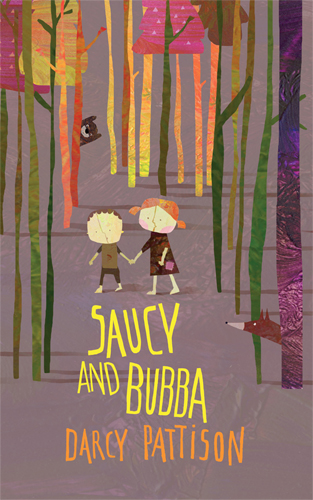
Saucy and Bubba. A Contemporary Hansel and Gretel Story.
I call my recent story,
SAUCY AND BUBBA, a contemporary Hansel and Gretel story because it puts it into a certain context: the discussion of step-mothers and how they treat the step-children. Mine is a twist on the old story–of course! In fact, it MUST be a twist on the old story, or it adds nothing to the conversation. Why would you rehash the same thing again. One reviewer said, “When a story can get me to even start to like the antagonist – like Saucy and Bubba does here – I know there’s a good book in my hands.” That’s what I wanted, a more nuanced look at the step-mother. I wanted the reader to have sympathy for her, even as they condemn her actions.
It’s like the original Superman comic: in today’s terms, it’s cliched. But it was hugely original for it’s time. It added to the conversations about justice and law-enforcement in interesting ways. If I simply repeated the Hansel and Gretel fairy tale, it would be a flop. Instead, we must think about how our stories fit into the context of our times. We must strive to join the conversation and to have something to add to the conversation. How can we add something different, interesting, conflicting, nuanced and so on? How are you enriching the conversation? How are you changing the conversation?
How does YOUR story join the conversation of our times?

By: Mark Myers,
on 5/8/2014
Blog:
(
Login to Add to MyJacketFlap)
JacketFlap tags:
Boys,
humor,
Men,
Communication,
Stories,
small town,
Southern,
south,
Books,
story,
friends,
Friendship,
Relationships,
Add a tag
“Come, Henry,” Colonel Birdwhistle called as he shouldered his cane pole. “We should be on our way. The day is ending and your mother will be spreading supper soon.”
“But we didn’t catch nuthin’” replied the glum boy.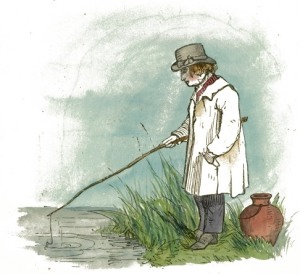
“We didn’t catch ‘anything’, you mean. And catching fish is but a small portion of our purpose here. We are here primarily to enjoy each other and the beauty of creation. If a fish should happen to find our bait attractive, that, my boy, is simply a bonus.”
Unconvinced, Henry pulled at his pole hoping for a nibble that would keep them a little longer. Receiving nothing for his trouble, he reluctantly stood and followed the Colonel toward home.
The two had not gone far when they heard the sound of an approaching horse. Soon it came into view as it galloped their way. Noting its speed, they moved well off of the path. When horse and rider came alongside the pair, the man on top pulled back on the reigns bringing the chestnut to a stop in a cloud of dust.
“Hello there,” called the rider from atop his mount. “Is this the way to Warbler’s Ridge?”
“I believe it used to be…” began the Colonel.
“I’m in an awful hurry,” interrupted the man. “I have urgent business at the paper mill there. This must be the right way, it was given me by the sheriff. I believe Whitaker was his name.”
“Yes, Hub Whitaker is the local sheriff. But as I was saying, this road…”
“Big fella, your sheriff. I’d guess you don’t have to worry much about crime here with a huge man like that minding the wall.”
“No sir,” answered Henry. “Things are pretty quiet round here. But…”
“That’s good, son. Real good,” cut in the stranger. “Well, I ain’t got time to sit around here talking. Like I said, I’ve got important business in Warbler’s Ridge. So if you’ll excuse me, I’ll be on my way.”
With a click of his tongue and flick of the reigns, he urged his horse forward while Henry held up an arm in protest.
“Mister, wait!” called Henry in futility, for the horse was gone. Turning to his companion, he asked, “Why wouldn’t he listen?”
“Henry, you have just learned an important lesson,” returned the Colonel. “Some people don’t understand that having a conversation means listening as well as talking. If he had taken a moment to close his mouth and open his ears, what would he have learned?”
“That the bridge he’s headed toward fell into the river a long time ago,” answered the boy slowly.
“I believe he should figure that out for himself any time now.”
As if on cue, a loud splash could be heard from the direction of the river. The old man and his young friend ambled quickly to the river and past the horse to help the fallen rider out of the water.
“You okay, mister?” asked Henry.
“Why didn’t you warn me, son?” inquired the dripping stranger.
“We tried, but couldn’t get a single word past all of yours,” returned the Colonel. “You missed a turn a ways back and need to follow the river a mile north to get to the nearest working bridge.”
Once more on his horse, the humbled rider continued on his way with every intent of listening for an answer the next time he asked a question. Henry and the Colonel headed home for supper, laughing the entire way. They may not have caught a fish, but they netted a good story to tell.
Photo credit: Ward, Lock, & Tyler of London [Public domain], via Wikimedia Commons



By: yesisedit,
on 5/2/2014
Blog:
Yesisedit's Weblog
(
Login to Add to MyJacketFlap)
JacketFlap tags:
Children's book,
Future,
funny,
world,
Ecology,
hare,
help,
society,
Stories and art,
Say it ain't so,
1,
look,
childrens poems,
bail out,
Fair-e-tale,
Words can be funny,
Fuel for thought,
My view,
love,
play,
time,
thought,
rabbit,
Murphy,
native,
weed,
political comment,
ownership,
children,
Life,
story,
Fun,
greed,
Thoughts,
Art,
drawing,
politics,
nature,
science,
animals,
humor,
Ideas,
indigenous,
Add a tag
A quite lively discussion has blown in from space on a friends Face-postcard about something I forgot because it went a completely different way in short order and is now a history lesson on indigenous peoples.
It was said the “Native “”American”” people” were here first and that they claim to be “Indigenous” and that they have their traditional stories to back up their claim to properties etc.
That got me to thinking (usually leads to minor disasters) that just because someone in your past lived some place and told creation stories doesn’t always mean you have any more rights than the guy who was born there after you lost the battle, in my case way after.
I know, growing up, my mother used to tell me, when I asked how I got here that I came from heaven and perhaps, if I’m a good boy, God will give me land there again though I think he may balk at the casino I want to build even if it is to take all the sinner’s money or credits or what ever the currency of his realm is.
And further more if in the past there was only one super continent, Pangaea or what ever they really called it, then we all have a claim to everywhere cause we are all descendants of the original inhabitants and I’ll bet a dollar to a doughnut there aint anywho who can tell me where they thought they came from even after the break up.
I thought perhaps we are all from Mars via the Pleiades star system but had to leave cause the Marshonians wanted the place back so we moved on as they had come from the Hercules system to Mars first.
To send every one back to where they came from is stupid, you can’t fit that many people on Ellis Island let alone grow enough hemp there to have a trade economy with New York.
I don’t know the answer other than if we don’t start being natives from “EARTH” the little grey men will boot us out and wipe out the myths of our origins from then to eternity.
 It’s a race none us may win …
It’s a race none us may win …


Some fear the blank page. I fear the half-written page.
I was writing along, doing great on a story when life interrupted (how dare it!). Has that happened to you? You know where the story is going, you’re in the drafting mode and going strong and BANG! Something happens. You have to set the story aside for a while.
Momentum is lost.
The story almost seems lost, too.
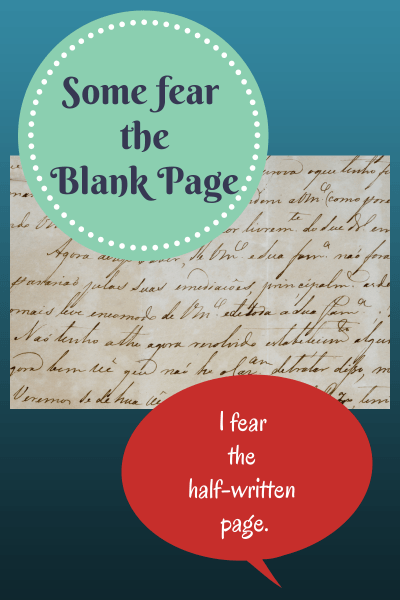
When life interrupts your story, how do you get back into it?
Picking up the Threads of an Abandoned Story
The first thing I’ll do this week is re-read the story. It’s important to see what I actually put on the page.
Next, I’ll try to recapture the excitement and recreate my mindset. This means looking at notes, images, reference material or anything else that will help remind me of my place in the story. Maybe I’ll need to write a letter to myself about how excited I was when I was writing the story.
Retype a chapter. If that doesn’t help, I’ll retype a chapter and make small edits as I go.
Move the pen across the page. When I taught freshman composition, I used a technique that always worked. I insisted that the student move the pen across the page and write words. In other words, they had to go through the motions of writing.
“What do I write?” they moaned.
“Doesn’t matter.”
“I don’t know what to write.”
OK. Write this sentence and keep writing it until you want to write something else:
I don’t know what to write, so I am writing this dumb sentence.
Inevitably, after writing that sentence once or twice, the student segued into something else.
If all else fails to get me back into the story. I’ll do the same thing. I’ll sit and go through the motions of writing until I get so bored with the drivel that I’ll start to get creative and something will happen. I only hope what happens on the page is magic!


By: Mike Cressy,
on 4/18/2014
Blog:
Sugar Frosted Goodness
(
Login to Add to MyJacketFlap)
JacketFlap tags:
story,
kids,
picture book,
publishing,
writing,
orange,
YELLOW,
children reading,
indigo,
MikeCressy,
the invasion,
Add a tag
From a picture book I'm writing called: "The Invasion"
I'll post the next color soon.
By: Mark Myers,
on 4/17/2014
Blog:
(
Login to Add to MyJacketFlap)
JacketFlap tags:
children,
story,
family,
Relationships,
humor,
marriage,
bliss,
wife,
husband,
Dad stuff,
Add a tag
There was a young husband who took a young wife to live in a shoebox beside a busy thoroughfare. The young man attempted to treat his wife with utmost sincerity and kindness, but often found that his tongue got in his way. Dull and ill-advised words suitable only for bachelorhood unfortunately found their way from his mouth to his young bride’s ear.
While the ever-patient bride overlooked most of the offenses, the stupid young husband constantly felt it necessary to pay penance for his outbursts by aiding his wife in her chores. After one particular peccadillo, the husband took it upon himself to do the laundry.
Knowing at least that colors and whites must go separately, he sorted the clothes into piles and decided to begin with the whites. In went the slightly dingy load while the hopeful husband added soap and waited nearby. When the buzzer rang, he jumped to his feet expecting to pull out gleaming white clothes. What to his wondering eyes did appear, but a washer full of pink. Pink, the color of panic. Nothing was the same as it had gone in.

With his bride due home soon, he frantically searched the load to find an offending single red sock. Casting it aside, he loaded the machine with bleach and ran the whites through once more. Bing – cycle over, no change. Pink panic.
A key at the door
A smiling bride
A kiss before the confession
Disappointment, accusation, regret
“My favorite shirt!” she exclaimed as she held up a blushing blouse. “Ruined!”
“I’m sorry, I’m so sorry,” pled the husband. “I’ll buy you another. What else can I do, my darling?”
“I will tell you what you can do,” she fumed. “You can promise you will never, ever, ever do the laundry again!”
“I swear it, my love,” promised the young man on bended knee. “I will never touch dirty clothes for as long as you’ll have me.”
One score and two years later, the older husband is still bound by his oath and forbidden to use the washing machine with the following exception: his rag towels.
With a family so large, the machine seems to run day and night, but can he help? Not besides folding.
I ask you the following, was the young naïve husband really so foolish decades ago, or did he craft a cunning plan sure to guarantee a life of marital slackness? Could you place that much credit for forethought on the brash youth who couldn’t keep his pie-hole closed? Would the wife’s version tell a different tale?


After six months of writing this blog, I have been issued a court order from The State of New Hampshire to cease and desist using the name Portsong. It seems that an official in the city of Portsmouth got hold of my fictional history book in which I poke a little fun at Yankees during Sherman’s march to the sea. The Honorable Thomas Lankin has taken umbrage with my depiction of Union soldiers from his fair city.

The letter looks official. I haven’t had the chance to get it to a lawyer and quite frankly don’t have the wherewithal to do so. This means a great deal for me, though. I’ve built whatever brand I have around the name Portsong and the characters within. The support I’ve garnered and readership I’ve built will be subject to loss when I rename everything. I find this turn of events quite disheartening.
Until I can sort this all out, I will have to go silent and shut down this blog. Obviously, there are some folks up north who will be happy with this. The Southern boy in me would like to make a Yankee joke about it, but I’m not up to it right now. I find it sad that a little guy in Georgia can’t come up with an idea and build a dream without being prosecuted. Where’s the justice in that?
So, goodbye, friends in my blogging community. Until we meet again, let us hope and pray that some people develop a sense of humor. The world would be a much better place – especially on this, the first day of April……
****Since April 1st is over, I will admit this was a gag. I think a successful one judging by the admissions below. The best was my sister’s text of concern all the way from California where she was vacationing. Once a little brother, always a little brother.


.png.jpg?picon=4257)
By: Diana Hurwitz,
on 3/28/2014
Blog:
Game On! Creating Character Conflict
(
Login to Add to MyJacketFlap)
JacketFlap tags:
story,
fiction,
writing,
emotions,
characterization,
communication,
craft,
behavior,
action,
expressions,
body language,
reaction,
Add a tag
There are myriad muscles that control the brow, chin, eyes, jaw, nose, and mouth. Some people can wiggle their ears. Different cultures utilize different expressions. Looking away may be deceptive in America, but indicative of respect in Japan. The important part when revising for body language is to note when and how you relate facial expressions and to avoid repetition and purple prose. One should not wriggle one's eyebrows while leering.
A character cannot control fleeting micro-expressions, the initial emotional response, but he quickly recovers from them. Facial expressions reflect our feelings about what is done and said, sometimes more eloquently or more obviously than we intend. Someone told me that there were only two true emotions: fear and love (or pleasure and pain). All other expressions stem from those two. The micro-expression field of study acknowledges seven. Love isn't one of them.
Unless the character is a professional interrogator, he is not going to hook Dick up to a lie detector, register his body heat and pulse, or measure the dilation of his pupils. There are, however, emotional triggers and signs that humans register in the space of a second. Most of your characters aren’t trained to recognize them. There are several personality types that pick up on nonverbal cues exceptionally well. If you want your detective to be a natural lie detector, pick one of them.
If you pay attention to what is happening in the body when a heightened emotion is experienced, you can make your characters believable. Highlight the places in your manuscript where you discuss emotions. Take a careful look at the choreography and word choices.
Anger: The jaw clenches. The lips thin and lift in a snarl. The nostrils flare. The eyebrows draw together. Aggression is a response to fear or a response to boundary violations. When Dick is angry, he may puff himself up to appear larger and stare his opponent into submission. His brow furrows. His blood pressure rises. The stress triggers a neurochemical cocktail in response to the fight or flight instinct. He flushes and clenches his fists. His sweat glands kick in. His muscles are primed to strike. He may shake his fist or point his finger. He may drift forward slightly, or step forward deliberately, depending on how much of a threat the opponent represents. His tone either lowers in warning or rises, depending on the circumstances. His anger may continue to simmer after the altercation. He usually vents to other people or indulges in a physical action to release it.
Anger can be expressed passively. After the initial response of jaw, nose, and lips, Jane may turn silent and look away. She may mutter under her breath or fake smile. She has the same physiological response, but her conscious instinct is to hide it. Passive people who are angry often cry when furious. As her throat closes and her blood boils, she becomes incoherent. She goes into wait and watch mode. Her anger simmers but she holds onto it. She is more likely to gossip and indirectly sabotage the person she is angry with. Temperament plays a role in how anger is expressed.
Contempt: A corner of the lip tightens and lifts. Contempt is in response to an intellectual boundary violation. Dick may make scornful or sarcastic comments. He may consciously override his initial response in an attempt to hide his disdain. He could state his true feelings in the matter. Contempt is in response to something or someone he does not believe, agree with, or like. He may deny his contempt, but his face betrays him.
Disgust: The nostrils clench and upper lip lifts. Dick may frown and pull back. He may flinch or purse his lips. He may utter exclamations of disgust in response. His heart rate slows. Disgust is in response to something he fears or abhors at gut level. His body retracts. He may put out his hand or wave someone away.
Fear: The upper lids and eyebrows lift. The lips stretch wide and pupils dilate. Fear is in response to a physical or emotional violation. Dick can react with mild fear or outright terror, depending on the stimulus. His response is instantaneous and involuntary. Dick's senses go on high alert. His fight or flight response is triggered. He either freezes or retracts. He may gasp. His muscles prepare to escape or avoid. He sweats. He shivers. The hair shafts stiffen. His pulse rate increases. He may go into shock, depending on the stimulus. His flesh may feel cold as the blood rushes to prime the muscles in his hands and legs and fuels the brain. He may step back or turn to run. He may cover his face and head with his arms. The rush of neurochemicals leaves him feeling shaky after the stimulus is dealt with.
Happiness: The corners of the lips lift, the teeth may show. The cheeks plump. The muscles around the eyes are engaged and wrinkles appear. The eyes may widen, or narrow if the nose wrinkles. Jane's posture relaxes and expands. She moves toward someone or something. Her body language is expansive. Neurochemicals induce a high. She may laugh. She is verbal and inclined to touch. She may be mildly delighted or completely overjoyed. Her focus may broaden to take in others. She wants to share her feeling.
Sadness: Pupils narrow. Upper eyelids droop. Corners of lips turn down. Sadness is a response to loss or hurt feelings. Jane's body language closes in protectively. She may cross her arms, lower her head, or turn away. She may grow quiet and have trouble speaking. Her throat feels constricted. Her eyes and nose prickle and water. Her chest feels heavy. She may become more aware of her pulse and breathing. A strong stimulus can feel like a blow to the viscera. She may gasp, cover her abdomen, or bend over. She may transition to shock. Sadness may be followed quickly by anger. With extreme grief, she may scream or yell. Her body may crumple to the floor. She holds herself and rocks back and forth. Crying can be soft and silent or guttural and loud. It can pass quickly or go on for minutes. The initial blast may be followed by softer gushes as Jane calms down.
Surprise: The eyebrows lift and eyes open wide. The forehead furrows. Surprise can be a response to something positive, negative, or neutral. Jane can have a quick startle or a longer shock wave. The reaction can be followed immediately by fear, joy, or confusion. Depending on the stimulus, the jaw drops. Surprise is usually quick and over, but the stimulus sometimes makes Jane ruminate on it for some time. She may share her surprise with others in an attempt to understand it.
Next time, we will take a look at gestures.
By: Mark Myers,
on 3/20/2014
Blog:
(
Login to Add to MyJacketFlap)
JacketFlap tags:
Books,
movies,
story,
family,
Poetry,
literature,
Relationships,
fairy tale,
humor,
parenting,
poems,
Stories,
sisters,
daughters,
Add a tag
There once were two lovely young girls, sisters in fact, who lived in a spacious abode that seemed, too often, to close in around them. They were two of four daughters, not the golden-brown edge ones, but the soft, fair-haired, middlest sisters, mixed and squeezed together so much that they couldn’t get along. In fact, they bickered constantly.
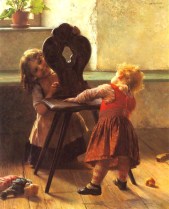
They bickered near, they bickered far
They argued things trivial, humdrum, and bizarre.
“I’m sick of your manners,” one would often yell.
“I don’t like your meddling or dubious smell”
The other undaunted, her resentments would list
And sometimes erupt in a tirade of fists
◊
Finally the lady of the manor (the loveliest, fairest maiden in the land) had had quite enough. She threatened, cajoled, and punished the two sisters. In frustration, she assigned them chores in the hopes of building teamwork. The clever mother’s schemes worked…but only for a season. For the enmity between the two sisters had grown as great and thick as their noble father’s ample chest hair.
He, the master of the house, was wise on his own account and took action to solve the embarrassing bickering once and for all. He tied the legs of the two sisters together with red silky ribbon, telling them to write down ten things each admired in the other. Only then would the ribbon be removed and their freedom attained.
He congratulated himself on his shrewdness and saw to the other important tasks of the manor, little knowing that the two cunning sisters conspired against him. Each composed a flowery list detailing their own most praiseworthy virtues, swapped scrolls, and beckoned their father back to their dungeon. So pleased was he that he released the two fair girls immediately with a tender kiss on each brow.
He boasted to his lovely wife in their bedchamber that night and wondered at how she could possibly resist his dashing charm. While choruses singing praise echoed inside his swollen head, the lady heard the familiar bicker, bicker, bicker from the other side of the door. The master and fine lady gave up! Would the two sisters ever be confidants or were they doomed to dwell in the moat of antipathy ever after?
Alas, one fine day, something came into their hands that brought the two together better than any silk ribbon ever could. It was warm, imaginative, and likable to both parties. They loved this thing, pondered it, and discussed it non-stop. Oft in the evenings, side by side they could be found on a blue, fluffy throne doing nothing but soak up the enjoyment of this thing…together. Yes, together.
An amazing light shone over the humble manor – the light of peace.
What was this wonderful thing of harmony, you ask? What could it possibly be? It was a book, then another, and another. It was literature that bound their squabbling hearts and imaginations together.
The lord of the manor, a brilliant novelist in his own mind, felt it important to pay tribute to one of the tomes that brought reconciliation to his home. To celebrate Divergent’s theatrical debut, I give you Virgil’s take on one of the wonderful works that put hatred asunder.
Not coming to a theater near you….
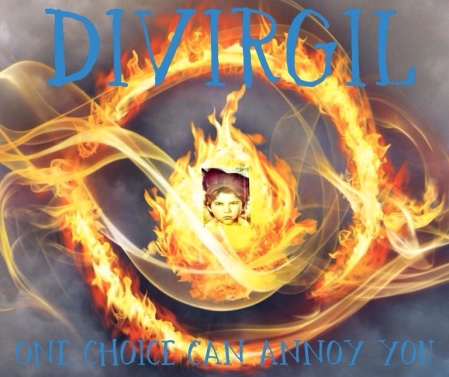
Artwork By Georgios Iakovidis (1853-1932)
Imitation Artwork yet unclaimed



By: Kenneth Kit Lamug,
on 3/19/2014
Blog:
RabbleBoy
(
Login to Add to MyJacketFlap)
JacketFlap tags:
Book Reviews,
story,
graphic novel,
comic,
Animators,
children's picture book,
Void,
jaw-dropping,
and stunningly beautiful,
Compendium,
david derrick,
david pimentel,
each tale transforms the page into a lushly realized world of imagination - a surefire prize for any,
ennio torresan,
Hollywood animator,
jenny lerew,
jj villard,
just-plain-fun compendium of illustrated awesomeness! Hilarious and moving,
keith baxter,
ken morrissey,
Scrambled Ink,
undeniably innovative,
Add a tag
Earlier this week, Liz B. from A Chair, a Fireplace and a Tea Cozy and I were discussing an episode of House Hunters over at Facebook. We'd both seen a show involving a couple who used what Liz called "alter egos." Husband and wife were of Italian heritage and would occasionally start talking to each other in stereotypical elderly Italian voices. They referred to themselves as something like Luigi and Lucinda when they were in old person Italian mode.
Liz and I were in agreement that this was an odd aspect of personality to want to expose on TV. However, the real estate agent for the episode, who was a friend of the wife, said the house hunting couple used the Luigi and Lucinda characters to help them work out disagreements. This made sense to me, though I still wouldn't have wanted strangers, or maybe even anyone else, to know about it.
What does this have to do with us? Well, Lucinda was pregnant. And while Liz and I were going back and forth about this, I pointed out that some day after that child is born, s/he is going to hear those voices coming out of Mom and Dad. I suggested it was a book idea.
But what kind of a book idea?
That set-up--a child with parents who speak to each other in funny voices--is a
situation. It is not a
story idea because it doesn't describe something happening to someone and, even better, suggest why it matters.
Situation: A child has parents who speak to each other in accented, elderly voices.
Story Idea: A child, realizing the accented, elderly voices his parents sometimes use when speaking to one another actually belong to the spirits of people from the past who have forced themselves into mom and dad's bodies, must find a way to free his folks and bring happiness to his family for the first time.
A situation is static and doesn't give writers much to work with. A story idea is far more dynamic. It gives writers a direction to work in and even gives a hint of some action.

.
Choosing the right set of words–the diction of your novel–is crucial, especially in the opening pages of your novel. Novels are a context for making choices, and within that context, some words make sense and some don’t.
A novel sets up a certain setting, time period, tone, mood and sensibilities and you must not violate this. If you are writing a gothic romance, the language must reflect this. For thrillers, the fast paced action demands a certain vocabulary. Violating these restrictions means a bump in the reader’s experience that may make them put down the book.
Let’s look at some examples. This is from my book, SAUCY AND BUBBA: A HANSEL AND GRETEL TALE.
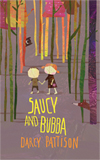 Just from the title you know that this is a contemporary retelling of Hansel and Gretel and this sets up expectations for the language that will be used. This is a first look at Krissy, the stepmother.
Just from the title you know that this is a contemporary retelling of Hansel and Gretel and this sets up expectations for the language that will be used. This is a first look at Krissy, the stepmother.
Krissy was singing to herself. Gingerbread days were filled with music, too. Once a month, Krissy made a gingerbread house and took it into town to sell to the bakery for $200. The bakery displayed it in their picture window for a month, and then donated it to a day care. Each month, Krissy checked out a stack of architecture books and pored over them.
Let’s substitute a couple words and see if it bothers you as a reader:
Krissy was caterwauling to herself. Gingerbread days were crammed with music, too. Once a month, Krissy slapped together a gingerbread house and took it into town to peddle to the bakery for $200. The bakery displayed it in their picture window for a month, and then dumped it off at a day care. Each month, Krissy checked out a stack of architecture books and flipped through them.
I’ve been extreme here in word choice, of course. The key is to listen to your story. Where are the places where a single word might interrupt the narrative? Work hard to control your word choices and the overall diction of your story. And I’ll stay with you for the whole book.


By: yesisedit,
on 2/4/2014
Blog:
Yesisedit's Weblog
(
Login to Add to MyJacketFlap)
JacketFlap tags:
Life,
Food,
story,
Fun,
forever,
religion,
Thoughts,
Art,
politics,
nature,
science,
humor,
me,
Ideas,
Poem,
Children's book,
world,
faith,
play,
fire,
Ecology,
time,
help,
society,
Stories and art,
Say it ain't so,
1,
bat,
soul,
you,
political comment,
Fair-e-tale,
eternity,
always,
My view,
never,
Add a tag
I would like to think that I could come up with some Geo-Terra-forming-hyper-thoughts but can only come up with the belief that I am correct to feel immortal and know that even after I go to the next eternity, that itself will end, and “I” become some horrific to these “Now ” eyes, some specimen of thing unknowable to this consciousness, yet another “thing” that feels correct to it’s nature and has no thought of being not correct, that after an eternity of these formations and resurrections and deaths I will sink into the opposite sludge of nonexistence but after a time, that is not time, will again float to the surface *POP* out and start all over again.


MIMS HOUSE: Great NonFiction for Common Core

The story of the oldest known wild bird in the world. At 62+, she hatched a new chick in February, 2013. Read her remarkable story. A biography in text and art.
Gifted and Talented
If you have finished a draft of a novel (however messy!), you are Gifted and Talented.
The fact that you are Gifted and Talented has an important implication for revising your story.
 GT Learners. First, I’ve talked with Gifted and Talented Teachers about how their students learn. When they learn something new, there’s a stage where they are very uncomfortable. Usually, GTs learn quickly and easily; they catch on. But sometimes the material is more difficult than usual, or more complex, or more puzzling. For some reason, they don’t catch on. They are unsure of what to do next.
GT Learners. First, I’ve talked with Gifted and Talented Teachers about how their students learn. When they learn something new, there’s a stage where they are very uncomfortable. Usually, GTs learn quickly and easily; they catch on. But sometimes the material is more difficult than usual, or more complex, or more puzzling. For some reason, they don’t catch on. They are unsure of what to do next.
At that point, GTs get uncomfortable and since they are rarely uncomfortable with learning, they often bail out. Anger, frustration, fear, impatience–do you experience some of these emotions when you face a revision that just doesn’t seem to be working?
The very fact that writing well is a process of revision is frustrating to a GT. They are used to getting things right the first time around. Maybe the first obstacle is embracing writing as a process.
Once you accept the process, though, you must also accept that facing difficulties in the revision process is normal! But if you’re a GT (and you are!), then it’s doubly frustrating because you so rarely face things that are hard. When I do the Novel Revision retreat, I warn the writers that they may hit a brick wall sometime during the weekend. The process of thinking about revision may start to overwhelm them.
Forewarned is forearmed. I try to head off the problem of frustration by warning that it is inevitable. When revising your story, you will face difficulties. This is normal! Let me say that again: Difficulties are normal. To be expected. Inevitable. A normal part of the process.
You have two choices: face them squarely and deal with them; avoid them and quit. And of course–you can’t quit!
As a GT, you are uniquely qualified to solve difficulties in revising because you do catch on quickly. You know how to locate and use resources that will help. You absorb information from a wide variety of sources. Given a day or so, you could probably tell me 30 ways that others have solved similar problems.
If you have a complete draft of a novel done, you are Gifted and Talented. That’s good news. It might mean you have a lower threshold for frustration, but in the end, it means you’ll make it through the writing process in great shape.
Perseverance or just plain Stubbornness
 We’ve heard the stories: Dr. Seuss? first book, To Think I Saw It on Mulberry Street (1937) was rejected twenty-eight times. Neil Simon, in Rewrites: A Memoir tells of over twenty drafts needed for his first play.
We’ve heard the stories: Dr. Seuss? first book, To Think I Saw It on Mulberry Street (1937) was rejected twenty-eight times. Neil Simon, in Rewrites: A Memoir tells of over twenty drafts needed for his first play.
Most of us would have to agree with Vladimir Nabokov, “I have written–often several times–every word I have ever published. My pencils outlast their erasures.”
Or Dorothy Parker, “I can’t write five words but that I change seven.”
Or John Kenneth Galbraith who jokes, “There are days when the result is so bad that no fewer than five revisions are required. In contrast, when I’m greatly inspired, only four revisions are needed.”
Or Truman Capote, “I believe more in the scissors than I do in the pencil.”
We understand that revising means doing it again until it’s right. But psychologically, that means the best trait a writer can have is stubbornness. On days when there is no hope sheer perseverance takes over.
Help
On those days, I highly recommend Art and Fear by David Bayles and Ted Orland. It?s my favorite books on the psychology of making art and goes into much more detail on many more subjects than I can here in five days. There have been days–like when I got that rejection of a novel after two revisions and fourteen months of dealing with an editor–that all I can do is sit at my desk and cry and re-read this book.
And start again.
Perseverance comes in two forms: revising until the story is right and making your art your way over a lifetime. It took Dr. Seuss twenty years after his first book to write The Cat in the Hat. ( 2007 annotated version). It often takes the work of years to hit your stride and produce your best work. We are in this for the long haul and this current book is just one of the waystations. Think career. Get stubborn. Persevere!
How do you deal with those deadly rejections?


By:
Jen Robinson,
on 11/25/2013
Blog:
Jen Robinson
(
Login to Add to MyJacketFlap)
JacketFlap tags:
growing bookworms,
literacy milestone,
story,
fiction,
vocabulary,
Newsletter,
wall-e,
baby bookworm,
berenstains,
Literacy Milestones,
Add a tag
 My daughter had what I thought was a tiny literacy milestone last night. She picked up the Berenstains' B Book, a "Bright & Early Book" that came to us as a hand-me-down. She flipped through it herself, and then asked me to read it. It's basicially a bunch of words and cumulative rhymes in which all of the words start with "B". In truth, it's the sort of book over which a sleep-deprived parent will find herself nodding.
My daughter had what I thought was a tiny literacy milestone last night. She picked up the Berenstains' B Book, a "Bright & Early Book" that came to us as a hand-me-down. She flipped through it herself, and then asked me to read it. It's basicially a bunch of words and cumulative rhymes in which all of the words start with "B". In truth, it's the sort of book over which a sleep-deprived parent will find herself nodding.

 Anyway, we got to the end of the book and Baby Bookworm said: "Let's read another book. That one didn't have much story" (or something to that effect). This is the first time I've seen her consciously aware of whether a book contained a story, or just other things (vocabulary, pictures, etc.).
Anyway, we got to the end of the book and Baby Bookworm said: "Let's read another book. That one didn't have much story" (or something to that effect). This is the first time I've seen her consciously aware of whether a book contained a story, or just other things (vocabulary, pictures, etc.).
And so we picked up another book. Because I am one to reward the search for story. Not to say that we won't seek out nonfiction in the future (there's a certain Pinkalicious Cupcake Book that my daughter is fascinated by). And of course much nonfiction does have story, in spades. The point is that I think it's important to be able recognize what is and isn't a story. Seeking out more personally satisfying stories is certainly a development along the path to becoming a reader.

 We also watched the movie Wall-E this weekend, my daughter's first viewing. I was pleased to note that she had no problem staying engaged during that first part of the movie, when essentially no dialog takes place. She needed us to explain what was happening, but she didn't need the movie itself to have words. I doubt she would have stayed still if there hadn't been a good story, though.
We also watched the movie Wall-E this weekend, my daughter's first viewing. I was pleased to note that she had no problem staying engaged during that first part of the movie, when essentially no dialog takes place. She needed us to explain what was happening, but she didn't need the movie itself to have words. I doubt she would have stayed still if there hadn't been a good story, though.
© 2013 by Jennifer Robinson of Jen Robinson's Book Page. All rights reserved. You can also follow me @JensBookPage or at my Growing Bookworms page on Facebook. This site is an Amazon affiliate.


By:
Darcy Pattison,
on 11/6/2013
Blog:
Darcy Pattison's Revision Notes
(
Login to Add to MyJacketFlap)
JacketFlap tags:
revise,
dramatic,
stream of consciousness,
monologue,
how to create,
omniscience,
story,
novel,
point of view,
character,
Characters,
characterization,
Add a tag
Now available!
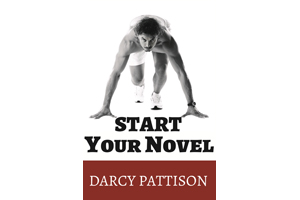
How does an author take a reader deeply into a character’s POV? By using direct interior monologue and a stream of consciousness techniques.
This is part 3 of a 3-part series on Point of View: Techniques for Getting Inside a Character’s Head. Read the whole series.
Outside
Outside/Inside
Inside
Going Inside a Character’s Head, Heart and Emotions
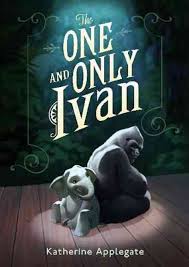 Omniscience.Jauss says, “In direct interior monologue, the character’s thoughts are not just ‘reflected,’ they are presented directly, without altering person or tense. As a result, the external narrator disappears, if only for a moment, and the character takes over as ‘narrator.’” (p. 51)
Omniscience.Jauss says, “In direct interior monologue, the character’s thoughts are not just ‘reflected,’ they are presented directly, without altering person or tense. As a result, the external narrator disappears, if only for a moment, and the character takes over as ‘narrator.’” (p. 51)
Here, “. . . the narrator is not consciously narrating.” In much of IVAN, he is consciously narrating the story. Sometimes, it might be hard to distinguish the difference because the character and narrator are the same, and it’s written in present tense (except when he is telling about the background of each animal). This closeness of the character and narrator is one reason to choose first-person, present tense. But there are still times when it is clear that IVAN is narrating his story.
But there also times when that narrator’s role is absent. In the “nine thousand eight hundred and seventy-six days” chapter, Ivan is worried about what Mack will do after the small elephant Ruby hits Mack with her trunk:
“Mack groans. He stumbles to his feet and hobbles off toward his office. Ruby watches him leave. I can’t read her expression. Is she afraid? Relieved? Proud?”
The last three questions remove the narrator-Ivan and give us what Ivan is thinking at the moment. The direct interior monologue gives the reader direct access to the character. With a third person narrator, those rhetorical questions might be indirect interior monologue; but here, because of the first person narration, it feels like direct interior monologue.
Or, in the “click” chapter, Ivan is about to be moved to a zoo:
The door to my cage is propped open. I can’t stop staring at it.
My door. Open.
The first two sentences still feel like a narrator is reporting. But “My door. Open.” feels like direct access to Ivan’s thought at that precise moment. He’s not looking back and reporting, but this is direct access to his thoughts.
A last technique for diving straight into a character’s head is stream-of-consciousness. Jauss says, “. . . unlike direct interior monologue, it presents those thoughts as they exist before the character’s mind has ‘edited’ them or arranged them into complete sentences.” (P. 54)
When Ivan is finally in a new home at a local zoo, he is allowed to venture outside for the first time. The “outside at last” chapter is stream-of-consciousness.
Sky.
Grass.
Tree.
Ant.
Stick.
Bird. . . .
Mine.
Mine.
Mine.
What the reader feels here is Ivan’s wonder at the great outdoors. It’s a direct expression of Ivan’s joy in being outside after decades of being caged. We are one with this great beast and it gives the reader joy to be there.
Or look at the “romance” chapter, where Ivan is courting another gorilla.
A final note: Sometimes, an author breaks the “fourth wall,” the “imaginary wall that separates us from the actors,” and speaks directly to the reader. This is technically a switch from 1st person POV to 2nd person POV. But it is very effective in IVAN in the second chapter, “names.” Here, Ivan acknowledges that you—the reader—are outside his cage, watching him. It was a stunning moment for me, as I read the story.
“I suppose you think gorillas can’t understand you. Of course, you also probably think we can’t walk upright.
Try knuckle walking for an hour. You tell me: which way is more fun?”
Do stories and novels have to stay in one point of view throughout an entire scene or chapter? No. Not if you are thinking about point of view as a technique to draw the reader close to a character or shove the reader away. You can push and pull as you need. You can push the reader a little way outside to protect his/her emotions from a distressing scene. Or you can pull them into the character’s head to create empathy or hatred. You can manipulate the reader and his/her emotions. It’s a different way of thinking about point of view. For me, it’s an important distinction because my stories have often gotten characterization comments such as , “I just don’t feel connected to the characters enough.” I think a mastery of Outside, Outside/Inside, and Inside point of view techniques holds a key to a stronger story.
In the end, it’s not about the labels we apply to this section or that section of a story. These techniques can blur, especially in a story like IVAN, written in first person, present tense. Instead, it’s about the reader identifying with the character in a deep enough way to be moved by the story. These techniques–such a different way to think about point of view!–are refreshing because they give us a way to gain control of another part of our story. These are what make novels better than movies. I’ve heard that many script-writers have trouble making the transition to novels and this is the precise place where the difficulty occurs. Unlike movies, novels go into a character’s head, heart and mind. And these point of view techniques are your road map to the reader’s head, heart and mind.
This has been part 1 of a 3-part series on Point of View: Techniques for Getting Inside a Character’s Head. Tomorrow, will be Inside: Deeply Inside a Character’s Head. Read the whole series
Outside
Outside/Inside
Inside


By:
Darcy Pattison,
on 11/5/2013
Blog:
Darcy Pattison's Revision Notes
(
Login to Add to MyJacketFlap)
JacketFlap tags:
story,
novel,
point of view,
character,
Characters,
characterization,
revise,
dramatic,
stream of consciousness,
monologue,
how to create,
omniscience,
Add a tag
Now available!

Partially Inside a Character’s Head: OUTSIDE AND INSIDE POV
How deeply does a story take the reader into the head of a character. Many discussions of point of view skim over the idea that POV can related to how close a reader is to a reader. But David Jauss says there are two points of view that allow narrators to be both inside and outside a character: omniscience and indirect interior monologue.
This is part 2 of a 3-part series on Point of View: Techniques for Getting Inside a Character’s Head. Here are links to parts 2 and 3.
These posts are inspired by an essay by David Jauss, professor at the University of Arkansas-Little Rock, in his book, On Writing Fiction: Rethinking Conventional Wisdom About Craft. I am using Ivan, the One and Only, by Katherine Applegate, winner of the 2012 Newbery Award as the mentor text for the discussion.
 Omniscience. Traditionally, “limited omniscience” means that the narrator is inside the head of only one character; “regular omniscience” means the narrator is inside the head of more than one character.
Omniscience. Traditionally, “limited omniscience” means that the narrator is inside the head of only one character; “regular omniscience” means the narrator is inside the head of more than one character.
I love Jauss’s comment: “I don’t believe dividing omniscience into ‘limited’ and regular’ tells us anything remotely useful. The technique in both cases is identical; it’s merely applied to a different number of characters.”
He spends time proving that regular omniscience never enters into the heart and mind of every character in a novel. A glance at Tolstoy’s WAR AND PEACE, with its myriad of characters is enough to convince me of this truth.
Rather, Jauss says the difference that matters here is that the omniscient POV uses the narrator’s language. This distinguishes it from indirect interior monologues, where the thoughts are given in the character’s language. This is a very different question about POV: is this story told in the narrator’s language or the character’s language?
In IVAN, this is an interesting distinction because Ivan is the narrator of this story; it’s told in his voice. But as a narrator, there are times when he drops into omniscient POV. In the “artists” chapter, Ivan reports:
“Mack soon realized that people will pay for a picture made by a gorilla, even if they don’t know what it is. Now I draw every day.”
Ivan tells the reader what Mack is thinking (“soon realized”) and even what those who purchase his art are thinking (“even if they don’t know what it is”). Then, he pulls back into a dramatic reporting of his daily actions. Notice, too, that he makes this switch from dramatic POV to omniscient POV within the space of one sentence. And the omniscient POV dips into two places in that sentence, too.
Because Mack is Ivan’s caretaker and has caused much of Ivan’s troubles, the reader needs to know something of Mack’s character. This inside/outside level is enough, though. The author has decided that a deep interior view of Mack’s life isn’t the focus of the story. It’s enough to get glimpses of his motivation by doing just a little ways into his head.
Indirect Interior Monologue
Another technique for the narrator and reader to be both inside and outside a character is indirect interior monologue. Here, Jauss says that the narrator “translates the character’s thoughts and feelings into his own language. “ (p. 45) The character’s interior thoughts aren’t given directly and verbatim. This is a subtle distinction, but an important one.
Interior indirect monologue usually involves two things: changing the tense of a person’s thoughts; and changing the person of the thought from first to third. This signals that the narrator is outside the character, reflecting upon the character’s thoughts or actions.
They are all waiting for the train. (dramatic)
They were all waiting reasonably for the train. (Inside, indirect interior monologue)
The word “reasonably” puts this into the head of the narrator, who is making a judgment call, interpreting the dramatic action.
Interior indirect monologue most often seen with a third-person narrator reflecting another character’s thoughts. But in Ivan, we have a first-person narrator. Applegate stays strictly inside Ivan’s head, except for a few passages where Ivan reports indirectly on another character’s thoughts. Because the passages are already in present tense, she doesn’t have that tense change to rely on.
Here’s a passage that could have been indirect interior monologue but Applegate won’t quite go there. Stella is an elephant in a cage close to Ivan.
“Slowly Stella makes her way up the rest of the ramp. It groans under her weight and I can tell how much she is hurting by the awkward way she moves.”
By adding “I can tell. . .” it stays firmly inside Ivan’s head. He tells us that this is true only because Ivan makes an observation. The story doesn’t dip into the interior of the other characters.
But there are tiny places where the interior dialogue peeks through. This from the “bad guys” chapter. Bob is Ivan’s dog friend; Not-Tag is a stuffed animal; and Mack is Ivan’s owner.
“Bob slips under Not-Tag. He prefers to keep a low profile around Mack.”
Ivan can only know that Bob “prefers” something, when he, as the narrator, dips into Bob’s thoughts.
But indirect interior monologue is also used by a first person narrator to report his/her prior thoughts. When the first person narrator tells a story about what happened in his past, he is both the actor in the story and the narrator of the story. Ivan tells the story of his capture by humans over the course of several short chapters. It begins in the “what they did” chapter:
“We were clinging to our mother, my sister and I, when the humans killed her.”
While Ivan’s story is most present tense, this is past tense because Ivan is reporting on prior events. Even here Applegate refuses to slip into interior indirect monologue. Instead, she just presents the facts in a dramatic manner and lets the reader imagine what Ivan felt. It’s interesting that withholding Ivan’s thoughts here evoke such an emotional response in the reader.
On the other hand, in “the grunt” chapter, Ivan tells about his family. Again, he is the narrator telling about a past event when he was a main character of the event:
“Oh, how I loved to play tag with my sister!”
This could be called direct interior thought, but because he’s narrating a past event, it’s indirect interior thought. Otherwise, he would say, “Oh, how I love to play tag with my sister!”
Or from the “vine” chapter, where Ivan talks about his thoughts after being captured by humans:
“Somehow I knew that in order to live, I had to let my old life die. But sister could not let go of our home. It held her like a vine, stretching across the miles, comforting, strangling.
We were still in our crate when she looked at me without seeing, and I knew that the vine had finally snapped.”
If this was direct interior, it would be:
“Somehow I know that in order to live, I must let my old life die.”
Applegate could have chosen to stay inside Ivan, but here, she pulls back so the reader isn’t fully inside this emotionally disturbing moment. She uses indirect interior monologue, instead of direct.
As Jauss says about a different passage, but it applies here, “This example also illustrates the extremely important but rarely acknowledged fact that narrators often shift point of view not only within a story or novel but also within a single paragraph.” (p.50)
This has been proclaimed a mistake in writing point of view, but Jauss says it’s a normal technique. We dip into Mack’s point of view, but then pull back to a dramatic statement about what Ivan is doing.
Indirect interior monologue often includes “rhetorical questions, exclamations, sentence fragments and associational leaps as well as diction appropriate to the character rather than the narrator. “ (p. 49) In one of my novels, I used a lot of rhetorical questions as a way to get into the character’s head and an editor complained about it. Now, that I know why I was using it (as a way to manipulate how close the reader was to the character), I could go back and use a variety of techniques. Knowledge of fiction techniques is freeing! Tomorrow, we’ll look at how to go deeply into a character’s head, heart and emotions.
This is part 1 of a 3-part series on Point of View: Techniques for Getting Inside a Character’s Head. Join us tomorrow for the final part of the series, Inside: Going Deep into a Character’s Head.
This has been part 2 of a 3-part series on Point of View: Techniques for Getting Inside a Character’s Head. Tomorrow, will be Inside: Deeply Inside a Character’s Head. Read the whole series.
Outside
Outside/Inside
Inside


By: Elena Ornig,
on 9/9/2013
Blog:
Anwers from digital publisher
(
Login to Add to MyJacketFlap)
JacketFlap tags:
Gold Coast Barcamp,
Gold Coast TechSpace,
story,
people,
process,
Australia,
world,
word,
FEATURED,
Answers,
Add a tag
(If you want to know the general History of BarCamp – click the white button below)
A free community event, the BarCamp Gold Coast 10 was organised by the founder and current President of Gold Coast TechSpace – Steve Dalton, by the current committee member and Secretary of Gold Coast TechSpace – David Tangye and Open Source Software Engineer – Anna Gerber.
It was a fantastic event with intense social interactions, interesting discussions, well-organised workshops, clear visual demonstrations and plenty of practical advice – just like this one that I was able to capture on the spot:
On a serious note, I can honestly say that I was listening and learning as much as I could. I mean, seriously, where else would you find such a fantastic opportunity to meet with people like Singularity University Ambassador (NASA Ames Research Center), Adjunct Professor at Bond University and Adjunct Professor at Griffith University – Dr ...
Read the rest of this post

By: Elena Ornig,
on 9/4/2013
Blog:
Anwers from digital publisher
(
Login to Add to MyJacketFlap)
JacketFlap tags:
story,
people,
Australia,
word,
FEATURED,
audience,
speech,
Answers,
personal experience,
Add a tag
At some point in our life we will face the fear of public speaking when we need to deliver a speech during a special occasion, address an audience, make a professional presentation or simply tell a story to a group of strangers; it is inevitable. Public speaking can be and really should be a satisfying experience. However, the majority of people feel fear, anxiety or experience stage fright. So, how can it be avoided? To answer this question I went to a ‘Dare to Speak!’ workshop at the Helensvale library which was organised by members of Toastmasters International.
It wasn’t news to me that learning public speaking skills can be beneficial to effective communication and help to become a better leader. However, my pen was filling pages very quickly and I am happy to share what I learnt with you.
‘Dare to Speak!’ was well-organised, presented and lead by the Master of Ceremonies – ...
Read the rest of this post
There’s an excitement in the air! I’ve started a new novel project.
Here’s what I don’t want to happen:
I don’t want the excitement for this project to get bogged down and dribble away. It happens too easily, as life issues take over, as problems arise with the project, or just as the work drags on.
I don’t want to talk bad about this project to anyone. Sometimes, I fall into the habit of complaining. This chapter or that character just aren’t cooperating! Why is this so hard? ARGH! I hate this project because it’s not going like I want. Nope. None of that this time. I love this project and I’m excited about it. I think my readers will love it, too. Hurrah! It’s such a joy to be working on such a great project.
I don’t want this project to drag on forever. I have scheduled two months to get a first draft done and I’m working hard on keeping to that schedule.
Here’s things I want to happen:
Joy. Excitement. Productivity.
Scheduling the Project
When faced with a big project, how do you break it down into manageable pieces?
I’ve already gone through the process of deciding what kind of novel this will be. Now, I just need to write it.
Here are the steps I plan to follow:
One page synopsis. I’ve written a one-page summary of the story, knowing full well that it would need to be fleshed out when the time comes. Now that the time is here, it’s easy to see where I want the story to go. There are huge gaps in the story, of course, but the one-page synopsis grounds the story in some particular issues.
Subplots to Detailed Plot.I am taking a day to flesh out some of the subplots. For example, one subplot will involve kids planning a parade. I spent today researching fun ideas to add to the parade and parade planning. Did you know that some parades these days require horses to wear diapers? It’s true. Horse poop on city streets–though once the norm–is now a no-no. There are special bags which are strapped to horses to catch their “meadow muffins.” (Now, see, isn’t that great language to use in a book? Meadow muffins. Horse apples.) Real life can be stranger than fiction: horse diapers.
I’ll take a day to research the other subplots and layout some ideas for developing the plot lines. Then, I’ll spend a day picking and choosing scenes to include and weaving them into the main plot line to create a detailed plot. That breaks the task of plotting into steps that I can manage. By approaching it from the subplot angle, I am free to make leaps and make errors: it doesn’t matter, it’s just a subplot. But in the end, I am sure that I’ll find some unique things to add to this story to make it more fun and funny.
WARNING: THIS 24-SECOND VIDEO SHOWS A HORSE POOPING. Your kids will probably love it!
If you can’t see this video, click here.
Characterization and character continuity. With a detailed plot in hand, I’ll double check the characterization needed. Because this is a second book in a series, much of the characterization is set up and I’ll need to continue it on, create an emotional arc for this book and make sure there is continuity. The first step will be the emotional arc for the character. I’ll need to make sure the external plot echoes the internal arc. This means a detailed summary of the story that includes the plot, subplots and character issues.
Revise. With a very long, detailed synopsis of the story, I’ll look for holes in logic, characterization and plot.
Write. Finally, I’ll use the synopsis to create a full draft–by Halloween.
This is a slightly different process for me, with more upfront planning. I’d like the full synopsis to be about 1/3 of the finished book, which will be enough detail to help me get the whole story done.

START YOUR NOVEL
Six Winning Steps Toward a Compelling Opening Line, Scene and Chapter

- 29 Plot Templates
- 2 Essential Writing Skills
- 100 Examples of Opening Lines
- 7 Weak Openings to Avoid
- 4 Strong Openings to Use
- 3 Assignments to Get Unstuck
- 7 Problems to Resolve
The Math adds up to one thing: a publishable manuscript.
Download a sample chapter on your Kindle.
When you finish your draft, do you look for a manuscript critique or a first reader? They are different and serve different purposes.
Manuscript Critique. The reader puts on his/her critical glasses and looks at your manuscript through that lenses. How does this story match up with the ideal novel? Of course, that assumes that you have common concepts about the ideal novel and that your concepts will match up with the editor’s understanding of ideal novels.
For beginning to intermediate writers, or for those particularly difficult stories, a manuscript critique can be helpful. It shows you where the story fails to touch a reader. It points out weaknesses and strengths. For example, you may find out that you failed to write the climax of the story; instead, you skipped over that chapter and wrote the aftermath of the climax. That’s a common problem and a critique can remind you why you need to actually write it.
 A disadvantage of the critique is that it is by nature a process of tearing apart your novel and matching up the parts to the ideal novel. It is destructive in many ways. The intent is to help you reconstruct, but it can be devastating. Editors, by and large, are manuscript critiquers and a ten-page revision letter is normal.
A disadvantage of the critique is that it is by nature a process of tearing apart your novel and matching up the parts to the ideal novel. It is destructive in many ways. The intent is to help you reconstruct, but it can be devastating. Editors, by and large, are manuscript critiquers and a ten-page revision letter is normal.
First Reader. On the other hand, a first reader has one task: to monitor his/her impressions as s/he reads and report those impressions to you. Some suggest a structured approach and ask readers to write in the margins something like this. B=bored. C=confused. E=emotional.
You can make up some sort of code like that, or you can just let the reader report as they wish.
The advantage of this is that it gives you feedback on what you actually put on the page. I often think that I’ve communicated anger, but the reader is merely confused. Especially after a revision, I need a first reader–and a naive one who hasn’t read the story before–to find out if I inadvertently added or subtracted something in the process of revising.
I am ALWAYS surprised by what a first reader will say. They are confused, bored, angry, or emotional in ways that surprise me–both good and bad. In other words, I need to fine-tune the story to the needs of a reader.
The disadvantage of a first reader is that you don’t always know the structural and technical problems that a manuscript critique might point out. A first reader might report that s/he was bored with the ending and then you’ll have to figure out why. The manuscript critique will tell you that you left out the climax. You get to the same revision, but by different routes.
Which do you prefer? A manuscript critique or a first reader?


It was a very busy few weeks getting ready for the two trade shows. Licensing expo begins on Tuesday. Bailee Blue is going for the first time in my agents iPad. He is really excited to meet new people and hoping to find some interest. Me, I’m going to take just a few days to clean up the aftermath in my studio. I have not cleaned the studio in a while. There are many papers to toss. It will be good to lighten my load.
I’ve also been reading an ebook on creativity. It’s been inspiring. I love to be inspired! Summer is a good time to revamp life!!! All things new! I love that thought! What are YOU working on?
Filed under:
My Characters 

View Next 25 Posts








 " Saucy is a real character dealing with real stuff—hard stuff that doesn’t have easy answers, not in real life and not in fairy tales, either. This is a really compelling and ultimately hopeful story. Highly recommended."
– Debby Dahl Edwardson, National Book Award finalist and author of My Name is Not Easy
" Saucy is a real character dealing with real stuff—hard stuff that doesn’t have easy answers, not in real life and not in fairy tales, either. This is a really compelling and ultimately hopeful story. Highly recommended."
– Debby Dahl Edwardson, National Book Award finalist and author of My Name is Not Easy











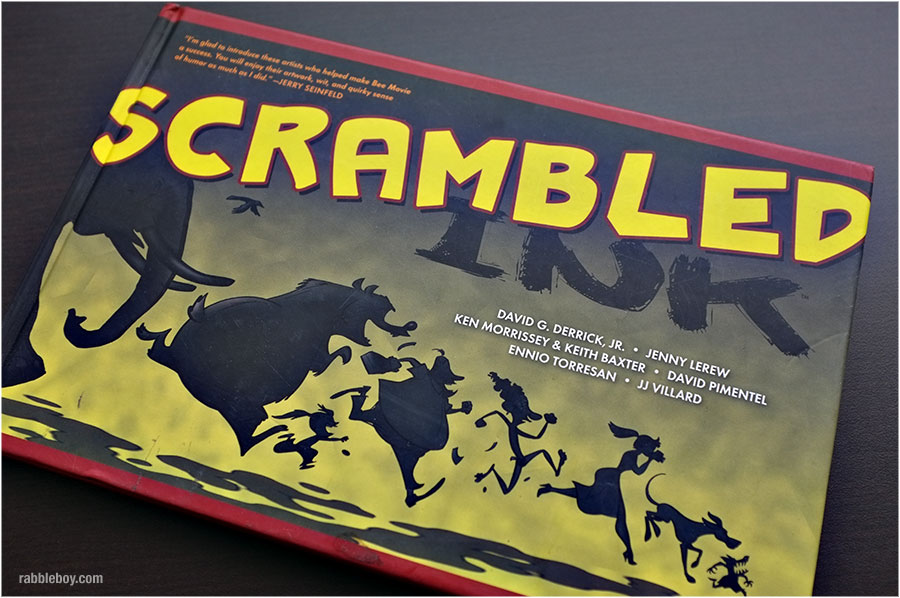

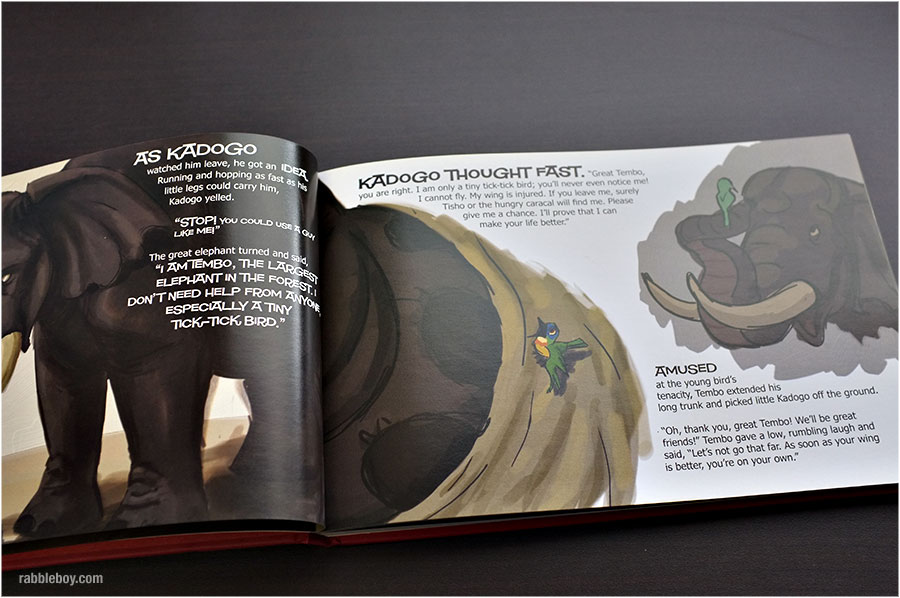
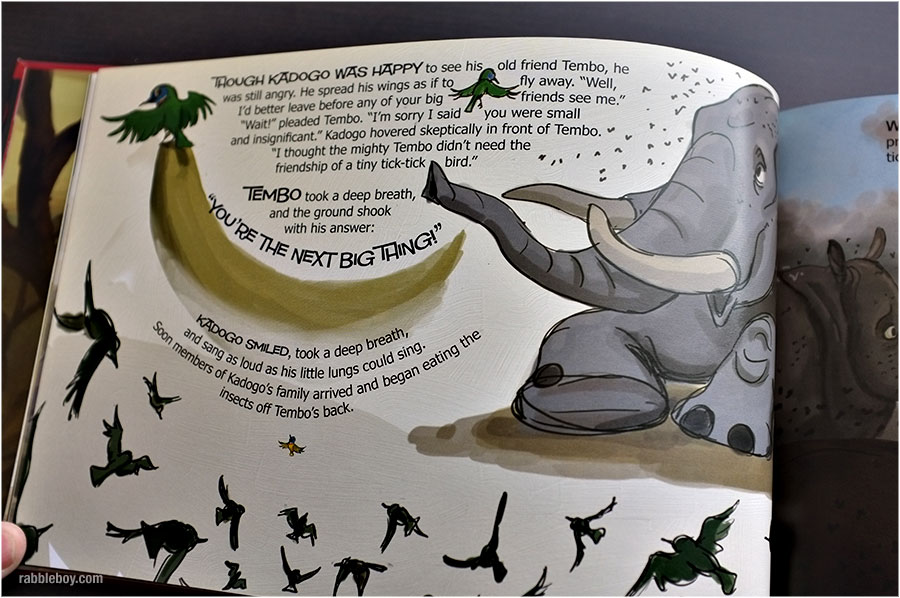


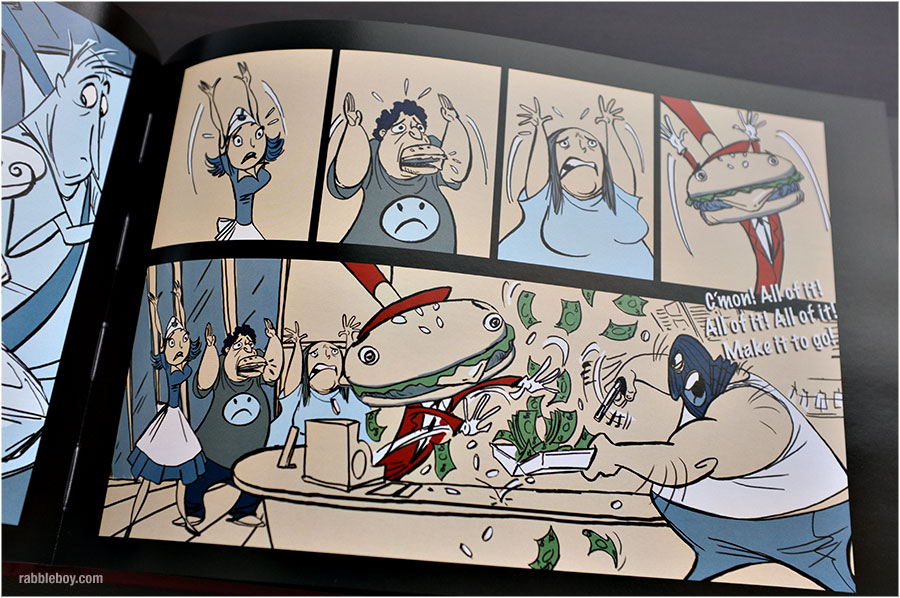
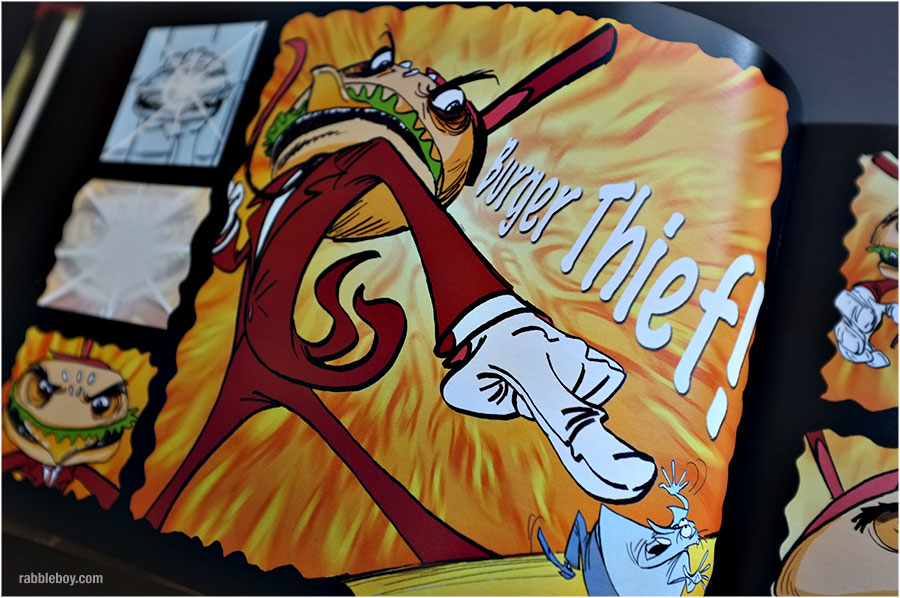
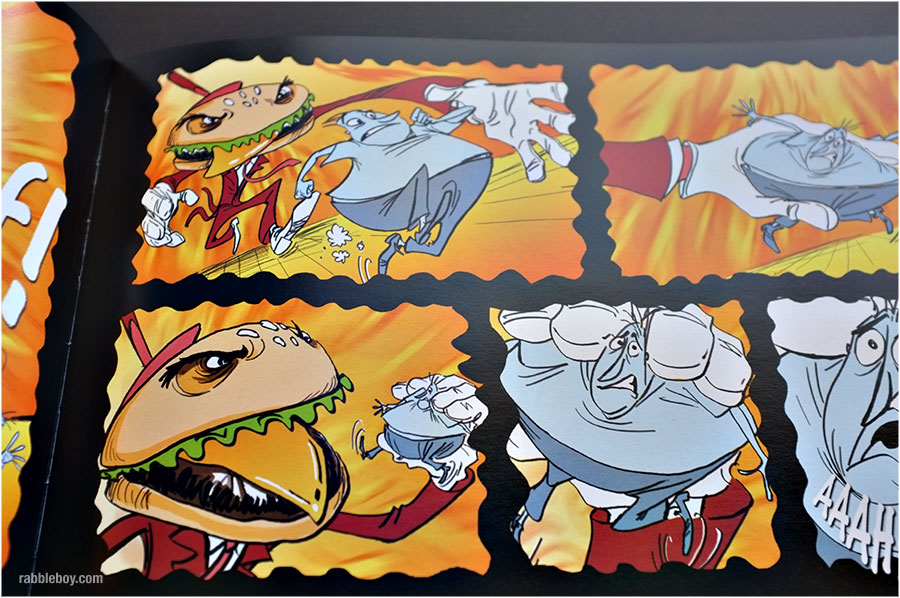
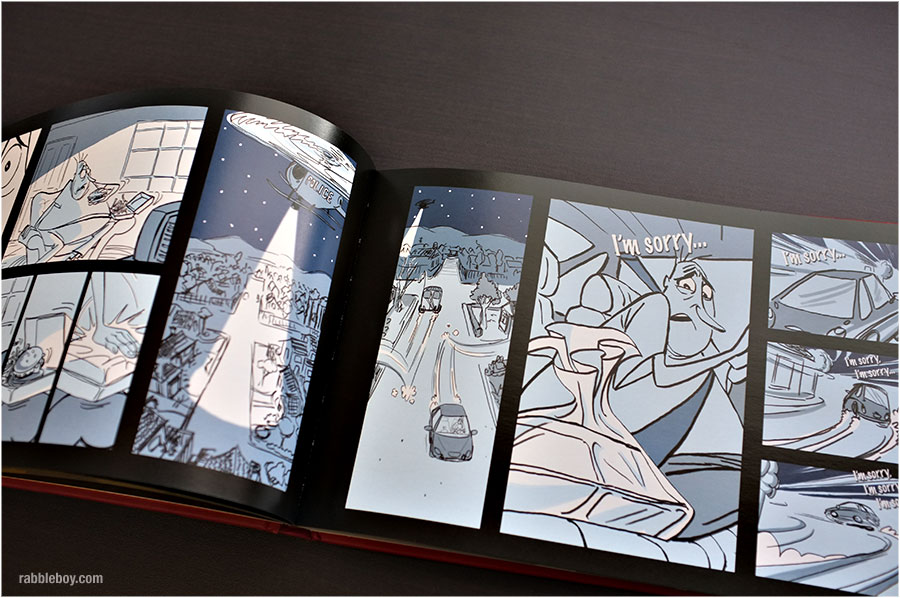

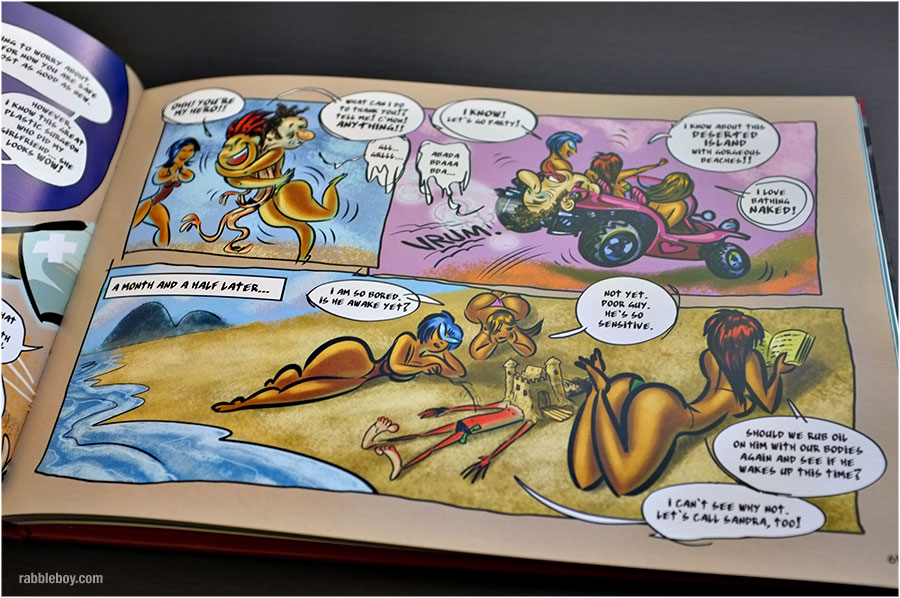
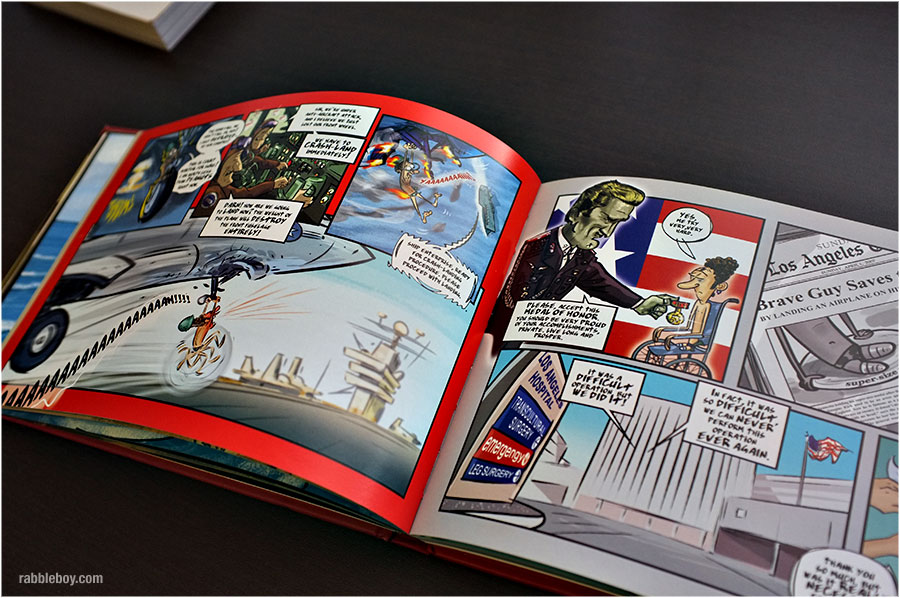
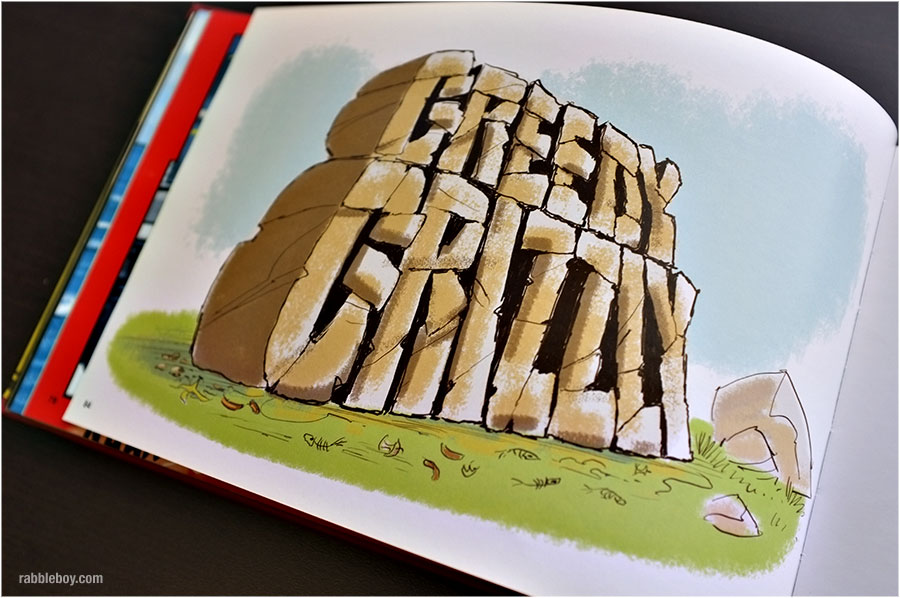
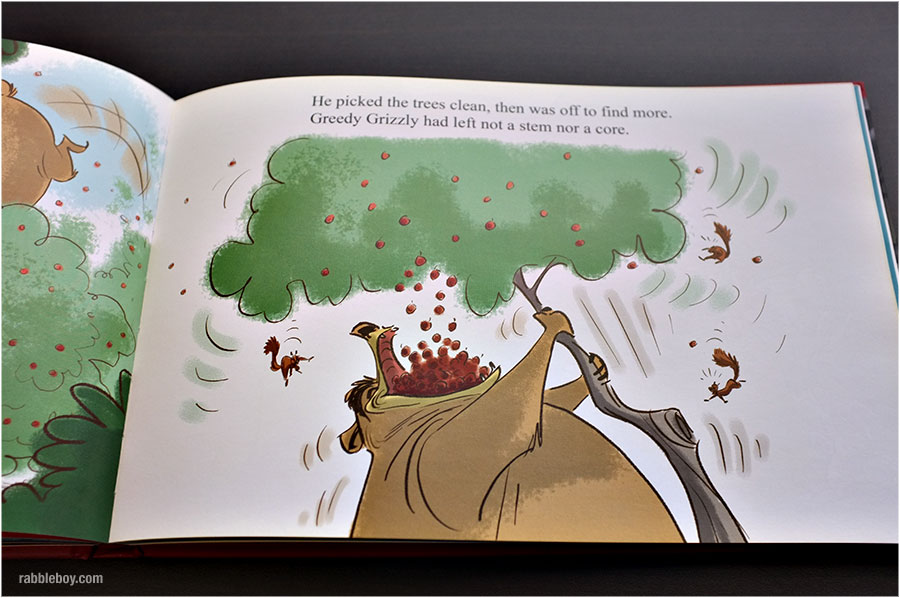
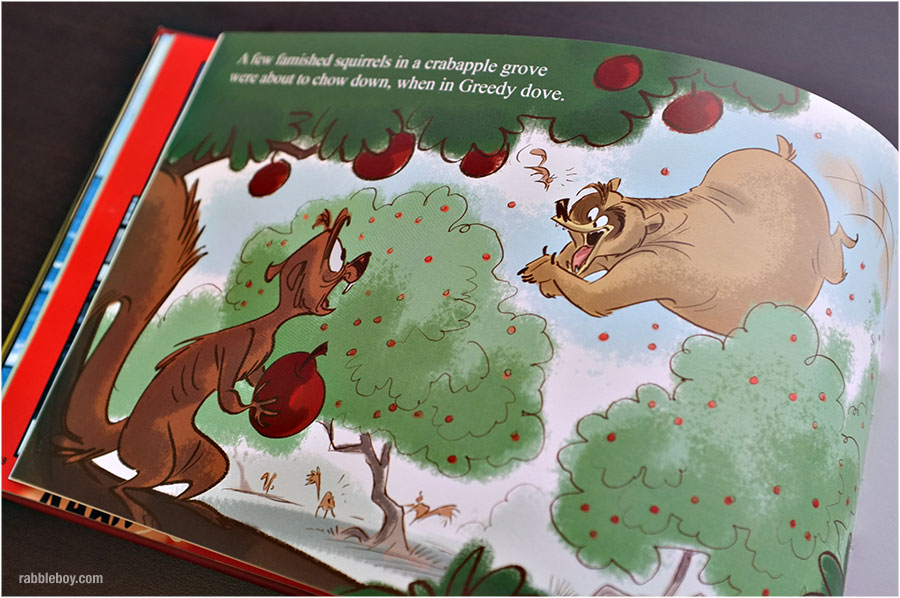
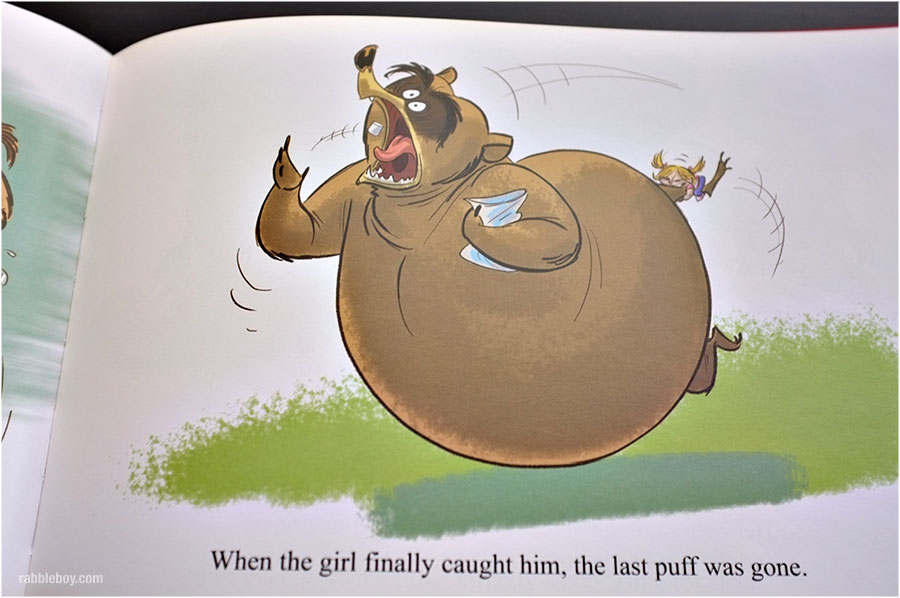
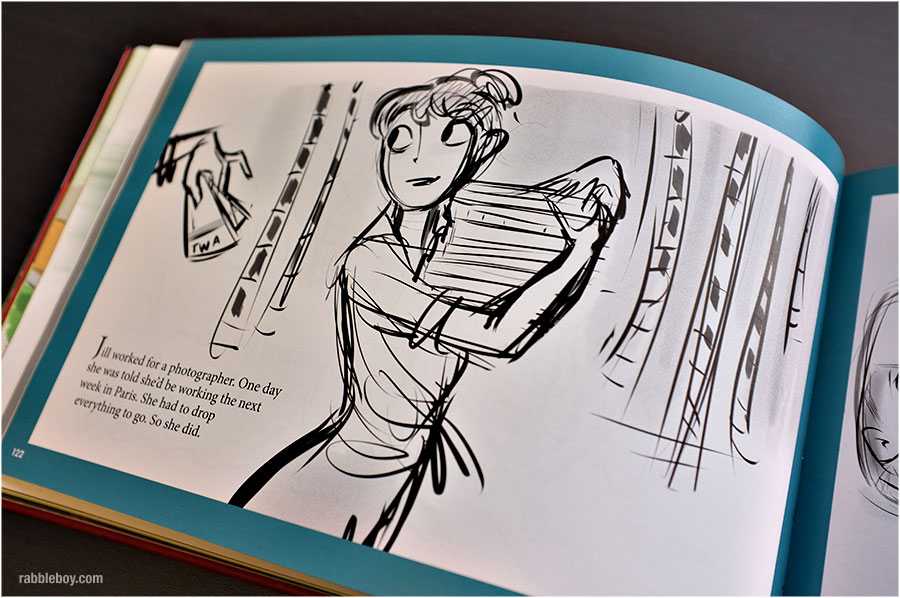

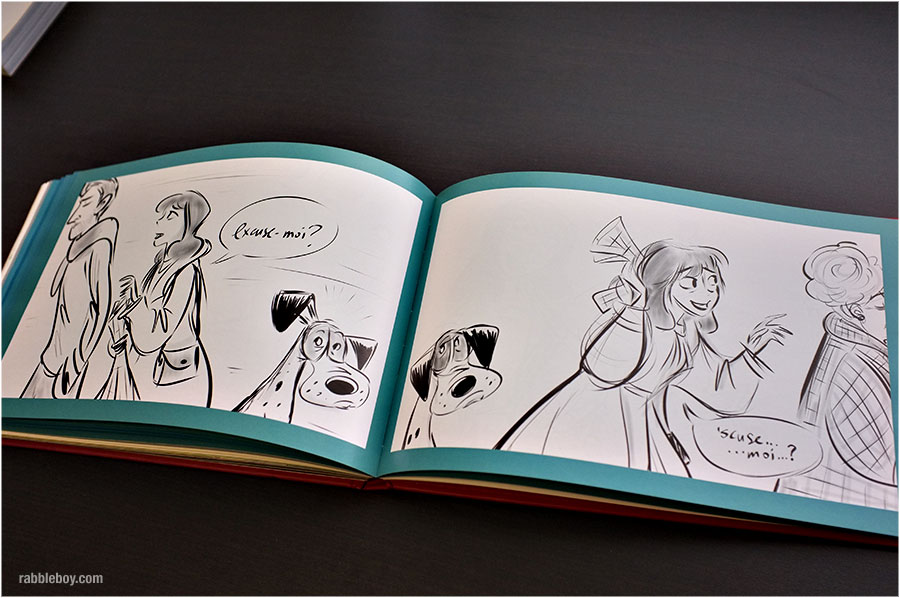
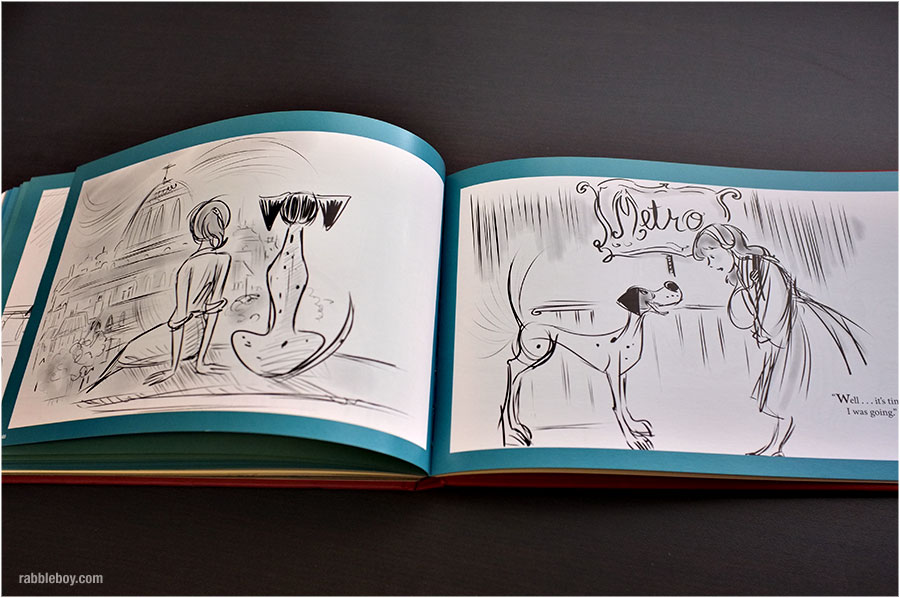
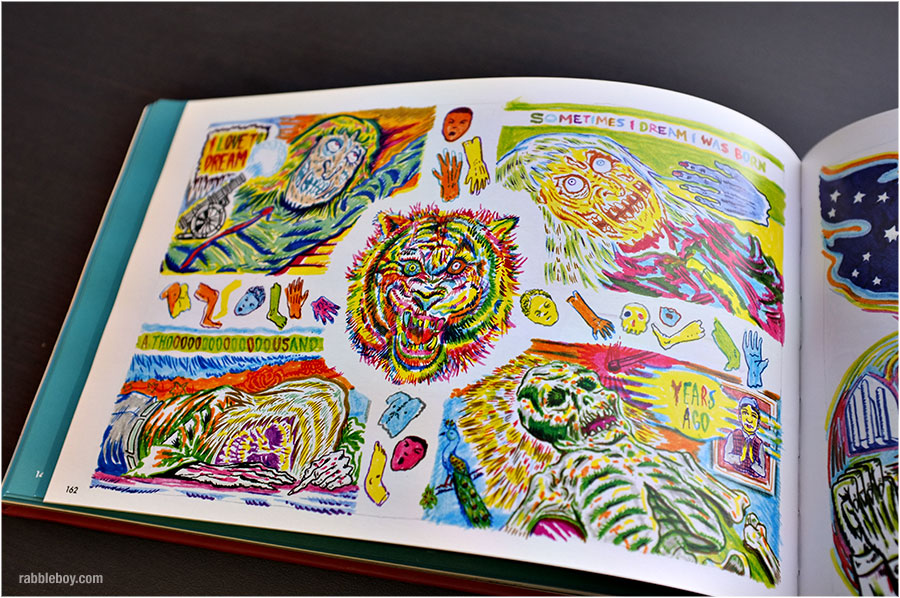


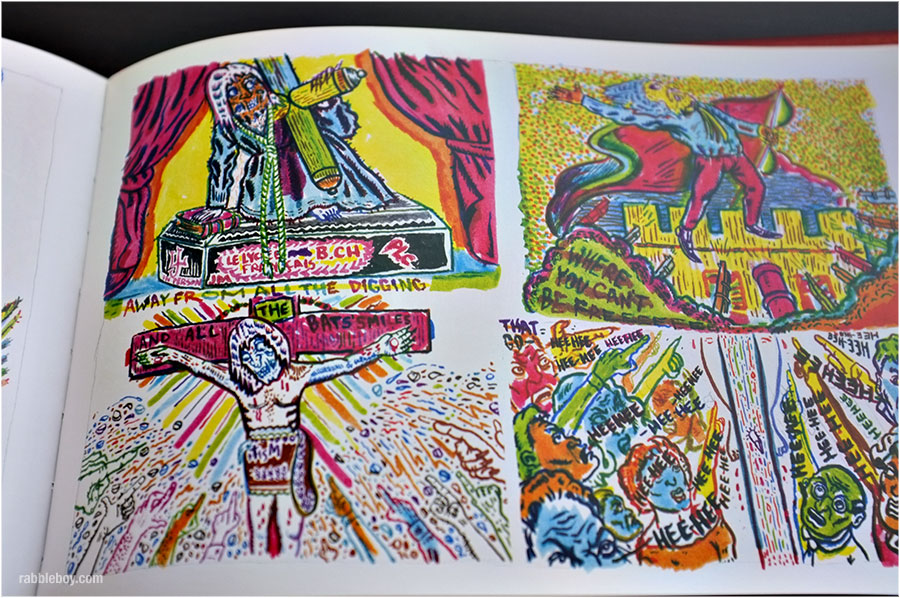
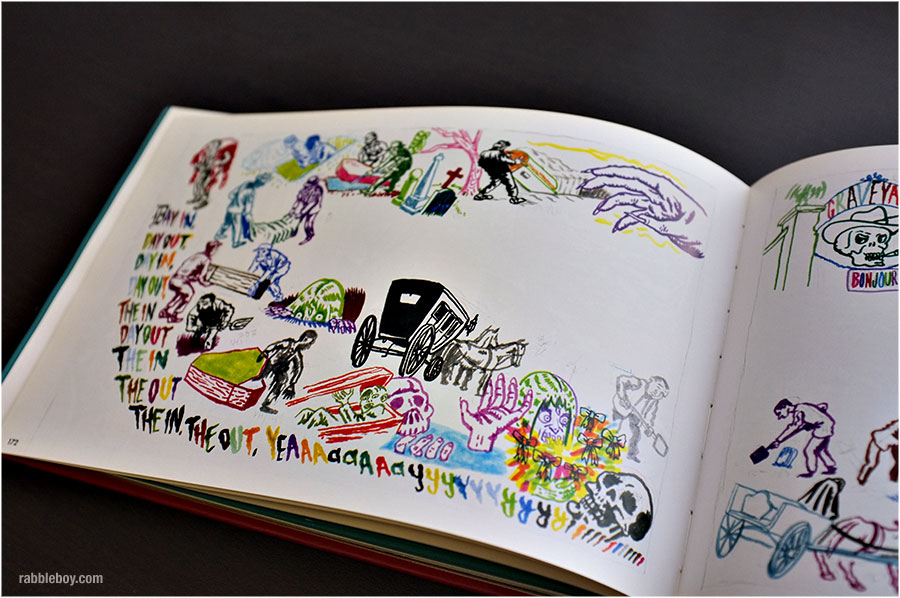




 GT Learners. First, I’ve talked with Gifted and Talented Teachers about how their students learn. When they learn something new, there’s a stage where they are very uncomfortable. Usually, GTs learn quickly and easily; they catch on. But sometimes the material is more difficult than usual, or more complex, or more puzzling. For some reason, they don’t catch on. They are unsure of what to do next.
GT Learners. First, I’ve talked with Gifted and Talented Teachers about how their students learn. When they learn something new, there’s a stage where they are very uncomfortable. Usually, GTs learn quickly and easily; they catch on. But sometimes the material is more difficult than usual, or more complex, or more puzzling. For some reason, they don’t catch on. They are unsure of what to do next. We’ve heard the stories: Dr. Seuss? first book,
We’ve heard the stories: Dr. Seuss? first book, 







Mark there are times when I chuckle. And there are days like today! Absolutely brilliant!
“I thought about solving this his way, but didn’t have to go at the moment and was slightly afraid of the neighbor’s reaction.”
Love your brain! :-)
The things that parade through the mind when doing boring chores. Thanks Paul – no barbed wire in my yard (I hope)
yep, i think the dog got it right )
He won his round…the war isn’t over.
Trust me; he got you licked any way you try. vw